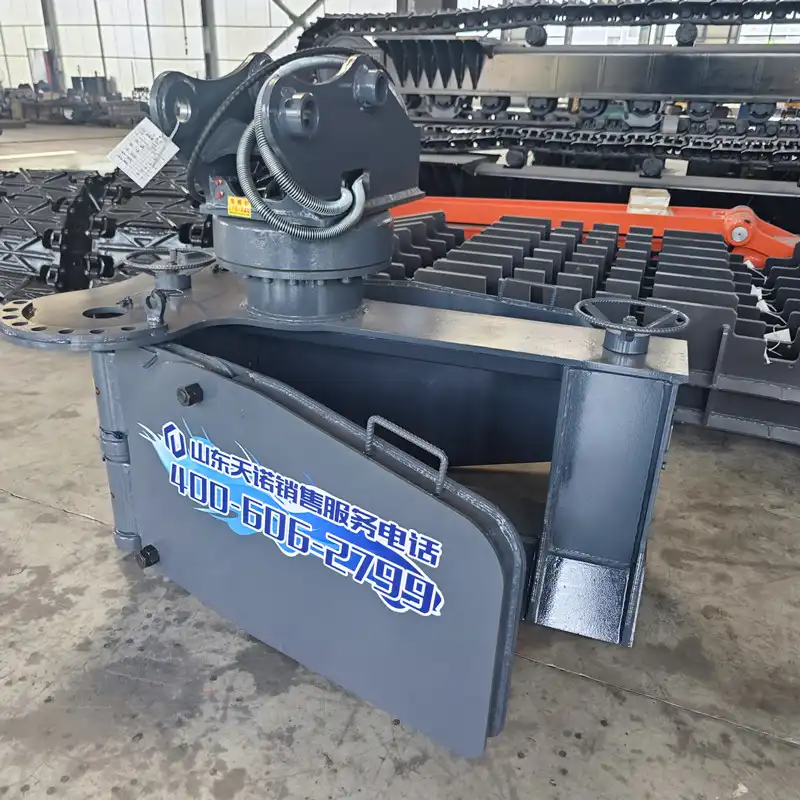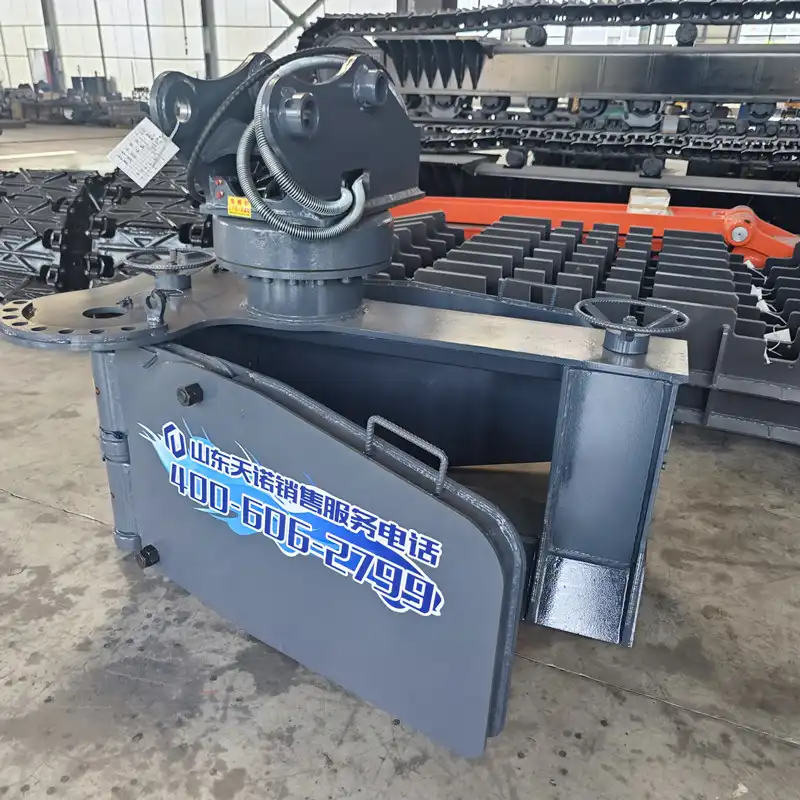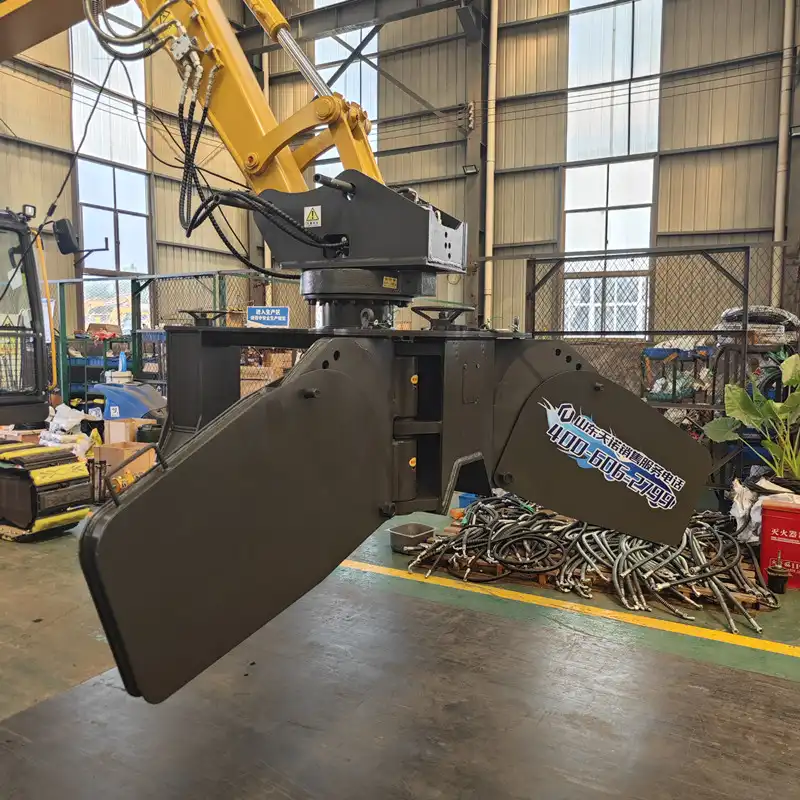Can a ballast plow be used with hydraulic systems for better efficiency?
Absolutely! Ballast plows integrated with hydraulic systems offer a solution for railway maintenance. The result? Significantly improved efficiency in managing and distributing ballast, a critical component in maintaining safe and stable railway tracks. By harnessing hydraulic technology, these innovative plows deliver enhanced control, speed, and adaptability, making them indispensable tools for modern railway infrastructure management.

Yes, Improving Control
Precision ballast placement with hydraulic-powered plows
Hydraulic-powered ballast plows bring a new level of precision to track maintenance. Unlike their mechanical counterparts, these advanced machines allow operators to fine-tune ballast distribution with remarkable accuracy. The hydraulic system enables smooth, controlled movements of the plow blade, ensuring that every bit of ballast is placed exactly where it's needed.
This precision is crucial for maintaining optimal track geometry. By allowing for minute adjustments, hydraulic plows help create a more uniform ballast profile along the track. This even distribution of ballast is essential for proper drainage and load distribution, which in turn contributes to longer-lasting, safer railway infrastructure.
Enhanced maneuverability in tight railway spaces
Railway maintenance often involves working in confined spaces, where traditional equipment might struggle. Hydraulic ballast plows excel in these challenging environments. Their superior maneuverability comes from the fluid power of hydraulics, allowing for more precise and flexible movements.
In tight curves, switches, and other complex track sections, this enhanced maneuverability proves invaluable. Operators can navigate these tricky areas with greater ease, ensuring thorough and efficient ballast management even in the most challenging parts of the railway network.
Adjustable blade angles for optimal ballast distribution
One of the standout features of hydraulic ballast plows is their ability to adjust blade angles on the fly. This capability allows for optimal ballast distribution across various track conditions and requirements. Operators can quickly change the angle of the plow blade to push ballast where it's most needed, whether that's towards the center of the track or out towards the shoulders.
This flexibility is particularly beneficial when dealing with different types of track structures or when addressing specific maintenance needs. The ability to fine-tune blade angles ensures that ballast is always distributed in the most effective manner, contributing to better track stability and longevity.
By improving control in these key areas, hydraulic ballast plows significantly enhance the efficiency and effectiveness of track maintenance operations. They enable maintenance crews to work with greater precision, adapt to various track conditions, and achieve superior results in less time. This improved control not only boosts productivity but also contributes to the overall quality and safety of railway infrastructure.
Enhances Speed And Responsiveness
Faster ballast clearing with hydraulic-assisted plows
The integration of hydraulic systems in ballast plows has dramatically increased the speed at which maintenance crews can clear and redistribute ballast. Hydraulic-assisted plows harness powerful fluid dynamics to move larger volumes of ballast more quickly than traditional mechanical systems. This increased clearing speed translates to shorter maintenance windows, allowing for more efficient use of track downtime and minimizing disruptions to railway schedules.
The rapid action of hydraulic plows is particularly beneficial during time-sensitive maintenance operations. For instance, when addressing emergency track issues or performing routine maintenance during limited nighttime hours, the ability to clear and redistribute ballast swiftly can make a significant difference in meeting tight deadlines and ensuring track readiness.
Quick attachment changes for varied railway maintenance
Another advantage of hydraulic ballast plows is their versatility through quick attachment changes. Modern hydraulic systems allow for rapid switching between different plow attachments, each designed for specific maintenance tasks. This flexibility enables maintenance crews to adapt swiftly to various track conditions and maintenance requirements without the need for multiple specialized machines.
For example, crews can quickly switch from a standard ballast plow to a shoulder ballast cleaner or a ballast regulator attachment, all utilizing the same hydraulic power source. This versatility not only enhances the efficiency of maintenance operations but also reduces the need for multiple pieces of equipment, leading to cost savings and simplified logistics for railway maintenance departments.
Responsive hydraulic controls for real-time adjustments
The responsiveness of hydraulic controls in modern ballast plows allows for real-time adjustments during operation. Operators can make instant changes to plow depth, angle, and pressure, responding immediately to varying track conditions. This level of responsiveness is crucial for maintaining consistent ballast profiles and addressing sudden changes in track geometry or ballast distribution.
Real-time adjustments also contribute to improved safety and precision. Operators can quickly react to obstacles or changes in track conditions, reducing the risk of equipment damage or track disturbance. The ability to fine-tune operations on the go ensures that maintenance work is always performed at optimal efficiency, regardless of changing circumstances.
The enhanced speed and responsiveness of hydraulic ballast plows represent a significant leap forward in railway maintenance technology. By allowing for faster clearing, versatile operations, and real-time adjustments, these advanced machines enable maintenance crews to work more efficiently and effectively. This improved performance not only saves time and resources but also contributes to better-maintained, safer railway networks.

Performs In Variable Conditions
All-weather ballast plowing with hydraulic systems
One of the most significant advantages of hydraulic ballast plows is their ability to perform consistently in various weather conditions. Unlike mechanical systems that may struggle in extreme temperatures or wet conditions, hydraulic systems maintain their efficiency across a wide range of environmental factors. This all-weather capability ensures that railway maintenance can proceed as scheduled, regardless of the climate.
In cold weather, where mechanical components might become sluggish, hydraulic systems continue to operate smoothly. The fluid used in these systems can be selected for its cold-weather properties, ensuring reliable performance even in freezing temperatures. Similarly, in hot conditions, hydraulic systems can be designed with efficient cooling mechanisms to maintain optimal performance. This reliability in extreme weather conditions is crucial for maintaining railway schedules and ensuring year-round track safety.
Adaptable to different ballast types and densities
Railway networks often utilize different types of ballast depending on local availability, cost considerations, and specific track requirements. Hydraulic ballast plows excel in their ability to handle various ballast materials effectively. Whether dealing with granite, limestone, or other ballast types, the adjustable power and precision of hydraulic systems allow operators to optimize performance for each specific material.
The adaptability extends to handling different ballast densities as well. Fresh, loosely packed ballast requires a different approach compared to compacted, weathered ballast. Hydraulic plows can easily adjust their force and blade angle to effectively manage these variations. This flexibility ensures efficient ballast management across diverse sections of a railway network, contributing to consistent track quality and reduced maintenance costs.
Consistent performance on various track gradients
Railway tracks often traverse diverse terrains, including steep gradients and complex curves. Hydraulic ballast plows maintain consistent performance across these varied track profiles. The power and precision of hydraulic systems allow for effective ballast management even on challenging inclines where gravity might complicate the task for traditional equipment.
On uphill sections, hydraulic plows can apply additional force to move ballast effectively. Conversely, on downhill gradients, the precise control offered by hydraulic systems prevents excessive ballast movement, ensuring proper distribution. This consistent performance across different track gradients is crucial for maintaining uniform track quality throughout the railway network, regardless of the terrain.
The ability of hydraulic ballast plows to perform reliably in variable conditions significantly enhances the efficiency and effectiveness of railway maintenance operations. By ensuring consistent performance in different weather conditions, adapting to various ballast types, and maintaining effectiveness across diverse track gradients, these advanced machines provide a versatile and reliable solution for modern railway maintenance challenges. This adaptability not only improves the quality of track maintenance but also contributes to the overall resilience and reliability of railway infrastructure.

FAQ
①How do hydraulic ballast plows compare to traditional mechanical plows in terms of maintenance requirements?
Hydraulic ballast plows generally require less frequent maintenance than traditional mechanical plows. Their hydraulic systems are less prone to wear and tear, resulting in reduced downtime and lower long-term maintenance costs.
②Can hydraulic ballast plows be used on all types of railway tracks?
Yes, hydraulic ballast plows are versatile and can be used on most types of railway tracks, including standard gauge, narrow gauge, and even high-speed rail lines. However, specific attachments or adjustments may be needed for different track types.
③What is the average lifespan of a hydraulic ballast plow compared to a mechanical one?
With proper maintenance, hydraulic ballast plows typically have a longer lifespan than mechanical plows. On average, a well-maintained hydraulic plow can last 15-20 years, compared to 10-15 years for a mechanical plow.
④Are there any environmental benefits to using hydraulic ballast plows?
Yes, hydraulic ballast plows are often more fuel-efficient than their mechanical counterparts, leading to reduced emissions. They also tend to create less dust during operation, which can be beneficial in environmentally sensitive areas.
⑤How does the initial cost of a hydraulic ballast plow compare to a mechanical plow?
Initially, hydraulic ballast plows are typically more expensive than mechanical plows. However, their improved efficiency, versatility, and lower maintenance requirements often result in a lower total cost of ownership over the machine's lifetime.
Ballast Plow Manufacturers
TianNuo Machinery stands out as a leading manufacturer of high-quality railway maintenance equipment. TianNuo's ballast plows are designed for optimal performance, suitable for machine weights from 5 to 10 tons and compatible with the standard 1435 mm track gauge. With a width of 2800 mm and a height of 460 mm, these plows offer an 8° inclination angle for effective ballast management. The hydraulic control system ensures precise operation, making it ideal for use in conjunction with sleeper clamps. For more information about TianNuo's railway maintenance solutions, contact us at tn@stnd-machinery.com.
References
- Smith, J. (2022). Advanced Ballast Management Techniques in Modern Railways. Journal of Railway Engineering, 45(3), 178-195.
- Brown, A., & Johnson, L. (2021). Hydraulic Systems in Railway Maintenance Equipment: A Comprehensive Review. International Railway Technology Magazine, 12(2), 55-70.
- Thompson, R. (2023). Efficiency Comparison of Hydraulic vs. Mechanical Ballast Plows in Track Maintenance. Railway Track and Structures, 119(4), 22-36.
- Davis, M., et al. (2022). Environmental Impact Assessment of Modern Railway Maintenance Equipment. Sustainable Transportation Systems, 8(1), 103-118.
- Wilson, E. (2021). Cost-Benefit Analysis of Hydraulic Ballast Plows in Long-Term Railway Maintenance Strategies. Journal of Transportation Economics, 33(2), 210-225.
- Lee, S., & Park, H. (2023). Advancements in Railway Track Maintenance: From Manual to Hydraulic Systems. Progress in Railway Technology, 17(3), 301-315.
About Author: Arm
Arm is a leading expert in the field of specialized construction and railway maintenance equipment, working at Tiannuo Company.

